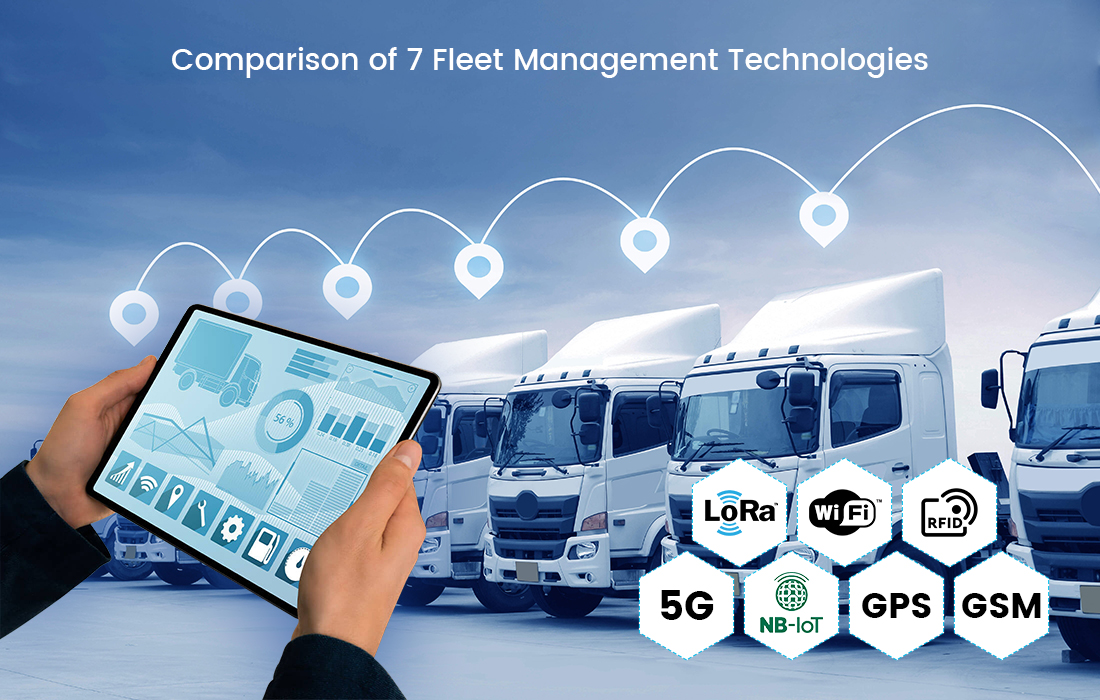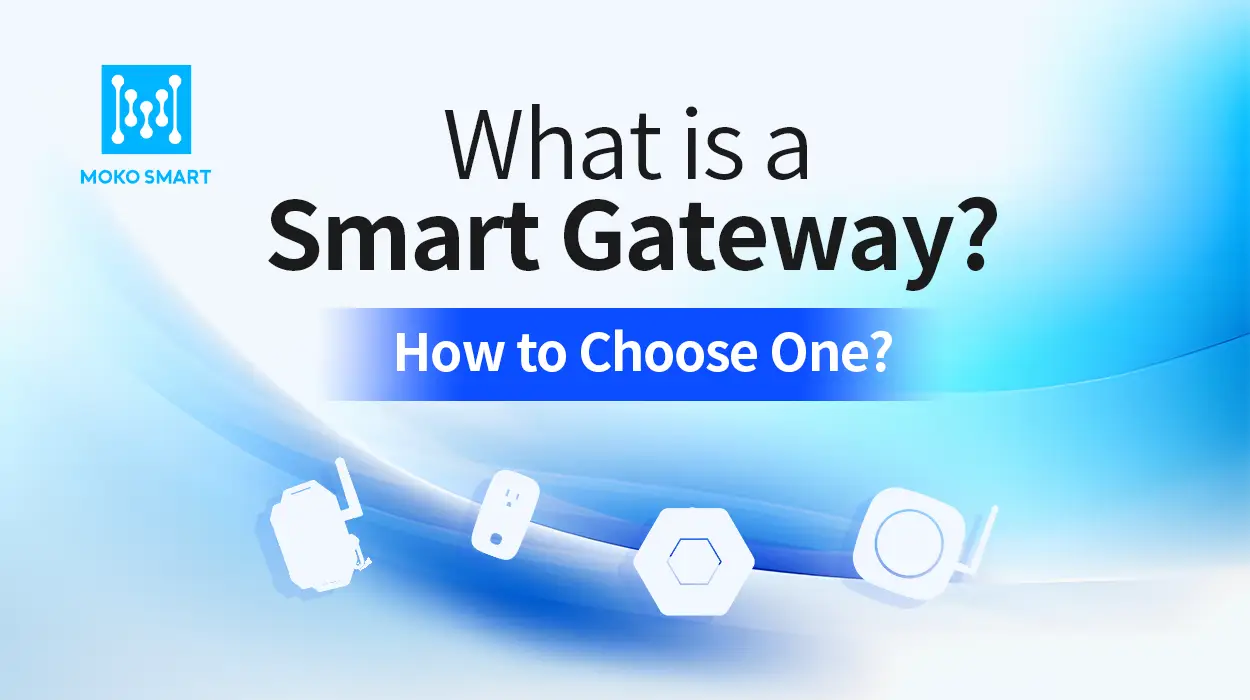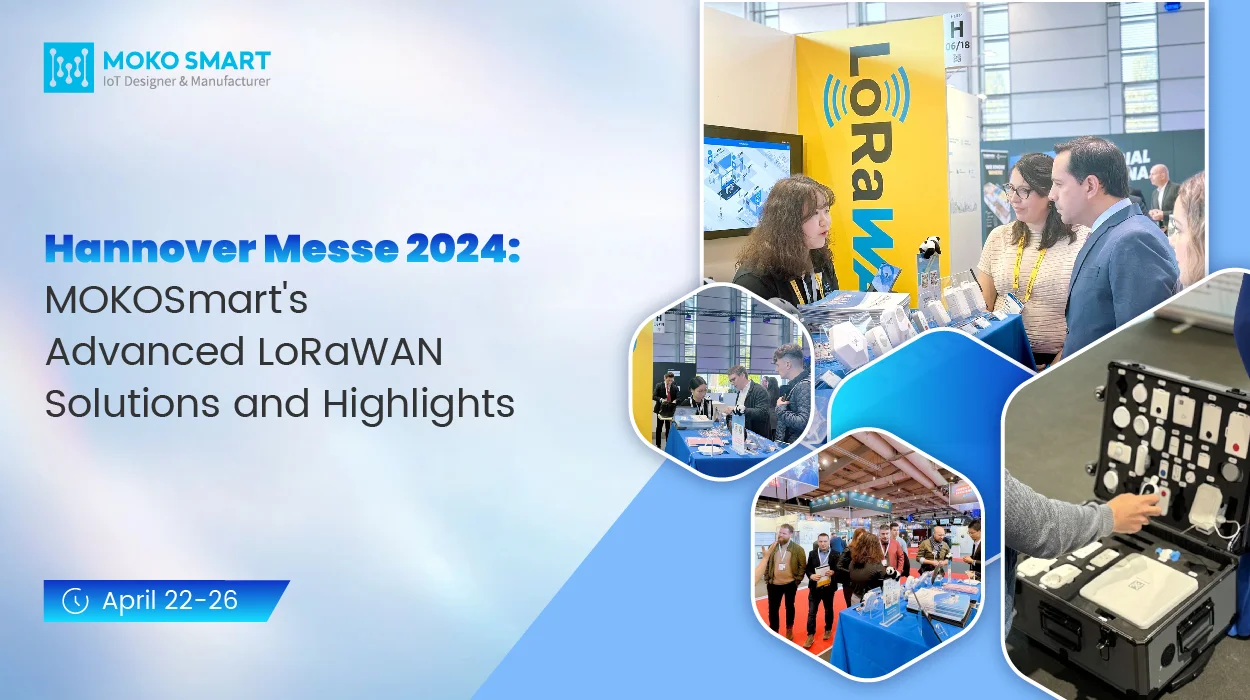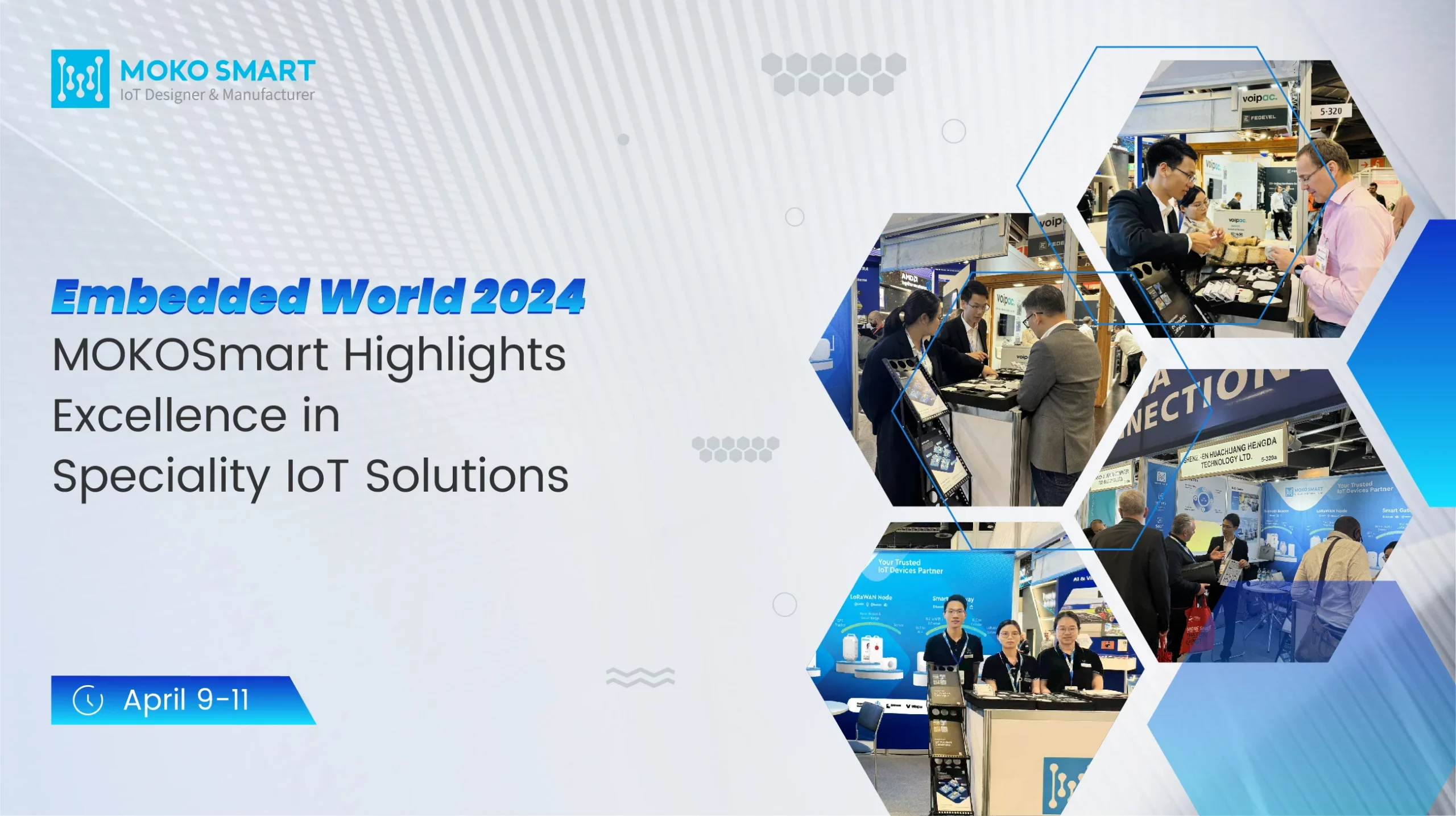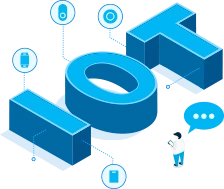あなたは運送会社のオーナーで、自社の車両を十分に油を注いだ機械のように稼働させたいと考えています。. 効率的な フリート管理ソリューション 時間を無駄にしないことを意味します, お金とか資源とか. しかし、どうやってそれを達成するのですか? IoT車両管理テクノロジーが答えです.
GPSなどの最先端技術, センサー, とワイヤレス接続により、IoT によるフリート管理に革命が起こります. 道路上でドライバーをより安全に監視および追跡するのに役立つ水晶玉を持っているようなものです. しかし、IoT は車両の位置追跡だけを目的としたものではありません. IoT により商品のリアルタイム追跡が強化されます, 予知保全スケジュール, さらにはドライバーの行動監視も. そして一番いいところは? 今すぐ使い始めて効率化できます。, スムーズに運行している車両.
フリート管理とは何ですか?
伝統的に, フリート管理とは、生産性を最大化するためにフリートのパフォーマンスとメンテナンスのあらゆる側面を監督することを指します。. しかし、IoT は、クラウド上のリアルタイム データと分析を使用してそのプロセスを自動化し、それを次のレベルに引き上げます。. 企業はついに、やみくもに運用するのではなく、真の精度と洞察力を持ってフリート運用を管理できるようになりました。.
市場はここに計り知れない可能性を反映しています. IoT フリート管理ソリューションは、 20 十億 2023 驚くべきことに 44.21 世界中で10億億人まで 2030 で のCAGR 12%. 車両のコネクティビティや、あらゆるものへの電動化や車両のテクノロジーなど (V2X) 当たり前になる, フリート運用におけるIoTの役割は今後も拡大し続けるだろう. 競争力の維持を目指すフリートオペレーターは、これらの強力な IoT テクノロジーを活用する必要があります。.
フリート管理システムにおける IoT の仕組み
IoT フリート追跡システムは、GPS テクノロジーと NB-IoT などのワイヤレス接続方法を組み合わせたものです。, GSM, と LoRaWAN. 各車両に搭載された小型 GPS トラッカーは、ワイヤレス ネットワークを介してリアルタイムの位置データをクラウド サーバーに送信します。. フリート管理者は、モバイル アプリを通じてこの位置追跡データにアクセスして分析できます。. しかし、このシステムは位置を特定するだけではありません – また、車速を捕捉して送信します, ドライバーのステータス, 燃料消費レベルとその他の指標. さらに、カメラやセンサーなどの追加テクノロジーを統合することで、, IoT フリート システムは、フリートの運用をさらに詳細に可視化します。.
上 7 IoT車両管理で使用されるテクノロジー
IoT の出現により、車両管理の新時代が到来. この変革の中心となるのは、車両をシームレスに統合するテクノロジーです。, デバイス, とシステム. IoT フリート管理のイノベーションを推進する上位 7 つのテクノロジーは次のとおりです:
GPS (全地球測位システム)
GPS は車両追跡のバックボーンです, 車両位置のリアルタイム監視を可能にする. このプロセスには、GPS デバイスを車両に取り付けることが含まれます, 衛星と通信してリアルタイムの位置情報と追跡の詳細を提供します.
Bluetooth低エネルギー
Bluetoothビーコン そしてセンサーは重要な役割を果たします. Bluetooth タグはドライバーの識別と緊急支援に使用可能. 車両に導入されたさまざまな BLE センサーは、車載資産のステータスを監視できます, ドアの開閉, 等.
RFID (無線周波数識別)
RFID は車両内の資産追跡と在庫管理に適しています. RFIDタグは車両や資産に取り付けられます, RFID リーダーはデータを取得し、その動きを追跡します. しかしながら, リーダーへの近接性に依存するため、追跡が制限されます.
NB-IoT (狭帯域モノのインターネット)
NB-IoT 低電力の広域ネットワークです (LPWAN) IoT アプリケーション向けに特別に設計されたテクノロジー. 長距離にわたる車両の位置を追跡するのに最適です.
LoRa (長距離の)
LoRa 長距離通信を提供するもう 1 つの LPWAN テクノロジーです。, 低電力通信機能. 特に遠隔地や田舎での車両管理に役立ちます。, 従来の携帯電話ネットワークのカバー範囲が限られている場合.
GSM (移動体通信のためのグローバルシステム)
GSM は、IoT フリート管理におけるデータ伝送用に、信頼性が高く広く利用可能なセルラー ネットワークを提供します. 車両とフリート管理システム間のリアルタイム通信を可能にします. GSM は世界的なカバレッジを提供します, フリート管理者がさまざまな地域にわたる資産を監視および管理できるようにする.
OBD (オンボード診断)
OBD システムは現代の車両に組み込まれています, 自己診断と報告が可能. 車両内に埋め込まれている, OBD はエンジンのパフォーマンスを監視し、車両の最適な状態を維持するために必要な修理を特定します。.
次の表は、いくつかの一般的な IoT フリート追跡テクノロジーの簡単な比較を示しています。:
| テクノロジー | GPS | LoRa | NB-IoT | GSM |
|---|---|---|---|---|
| 追跡 | リアルタイム | 限定 | 限定 | リアルタイム |
| カバー範囲 | グローバル | 長さ | 長さ | グローバル |
| 正確さ | 高い | 適度 | 適度 | 高い |
| データ送信 | なし | 低 | 低 | 高い |
| バッテリー寿命 | 適度 | 長さ | 適度 | 適度 |
| 用途 | 車両追跡, 機器の追跡 | 倉庫追跡 | スマートシティ, スマート農業 | 自動運転車, テレマティクス |
フリート管理における IoT テクノロジーの主な利点
モノのインターネット (IoT) 最近のテクノロジーはフリートの管理方法を完全に変えています. IoT が車両運用にもたらす主な利点は次のとおりです。:
- リアルタイムの車両監視: IoT フリート管理テクノロジーの実装により、車両と関連資産の効率的な監視が可能になります. 双方向通信システムを通じて, 重要なデータが記録されている, 遠隔監視を可能にする.
- リスクの軽減: 無線技術センサーとインテリジェント交通システムの応用は、車両管理におけるリスク軽減に役立ちます.
- リモートデータ管理: IoT ベースのソリューションにより、フリート オペレーターは車両のパフォーマンス データにリモートでアクセスできるようになります, 情報に基づいた迅速な意思決定を促進する.
- コストの最適化: 無線テクノロジーは、貨物輸送事業の効率的な運営を支援します.
- 完璧な顧客サービス: フリート管理センターは、現在の ERP システムにインテリジェントなソリューションを組み込むことができます。, それにより、業務のあらゆる面でパフォーマンスを最適化します。.
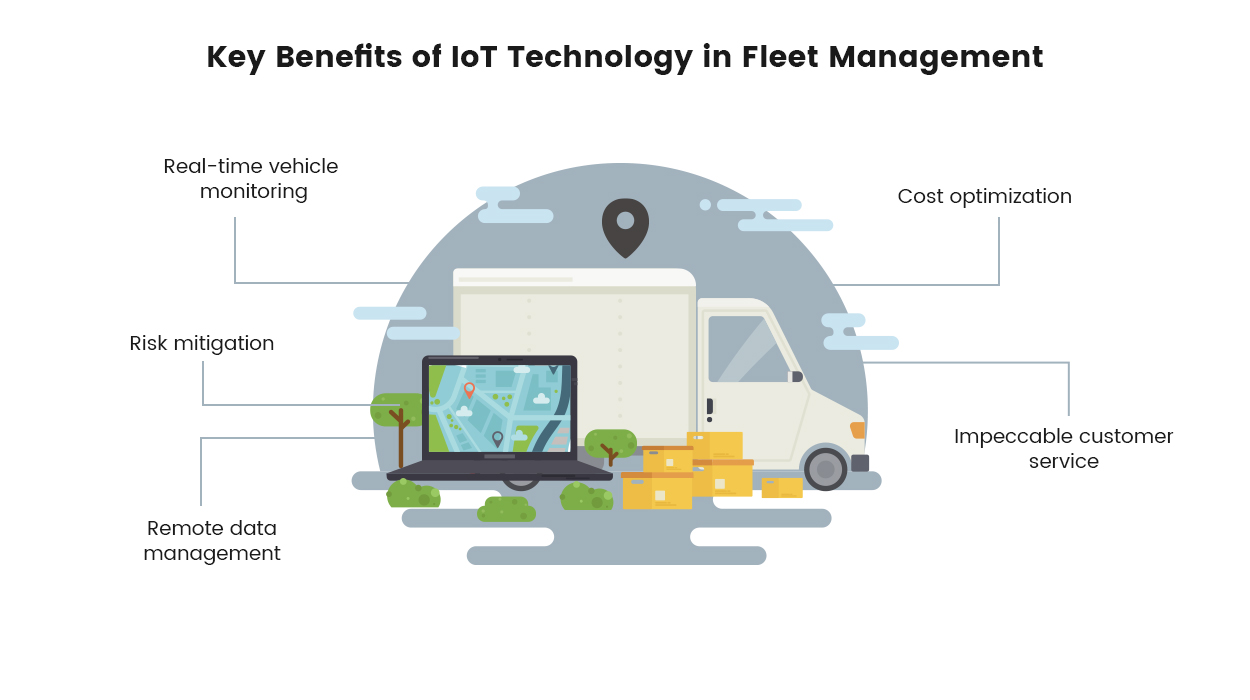
フリート管理テクノロジーにおける IoT の使用例
IoT フリート管理は幅広い業界とアプリケーションを網羅します. フリート管理の一般的な使用例をいくつか示します。:
車両追跡: フリート管理システムにより車両のリアルタイム追跡が可能, フリートオペレーターが自分たちの位置を監視できるようにする, 速度, そしてルート.
資産管理: フリート管理システムは車両だけでなく他の資産も追跡できます, 設備などの, トレーラー, またはコンテナ.
ルートの最適化: フリート管理ソリューションは車両のルートの最適化に役立ちます, 交通量などの要因を考慮して, 道路状況, および顧客の所在地.
メンテナンスと診断: これらのシステムは、車両の状態に関する完全な洞察を提供します。. メンテナンスのニーズを追跡します, モニターエンジン, 何か修正が必要な場合は警告を発します.
ドライバーの行動監視: これらのソリューションはドライバーの運転状況を監視します – スピード違反, 急ブレーキ, アグレッシブな運転, 等. そのデータを使って, より安全な運転習慣を促進できます, 事故を防ぐ, そして保険料も節約できる.
コールド チェーンの監視: 果物や医薬品などの生鮮食品用, このシステムは冷凍車両内の温度と湿度を監視および制御します。, サプライチェーン全体で貨物を新鮮に保つ.
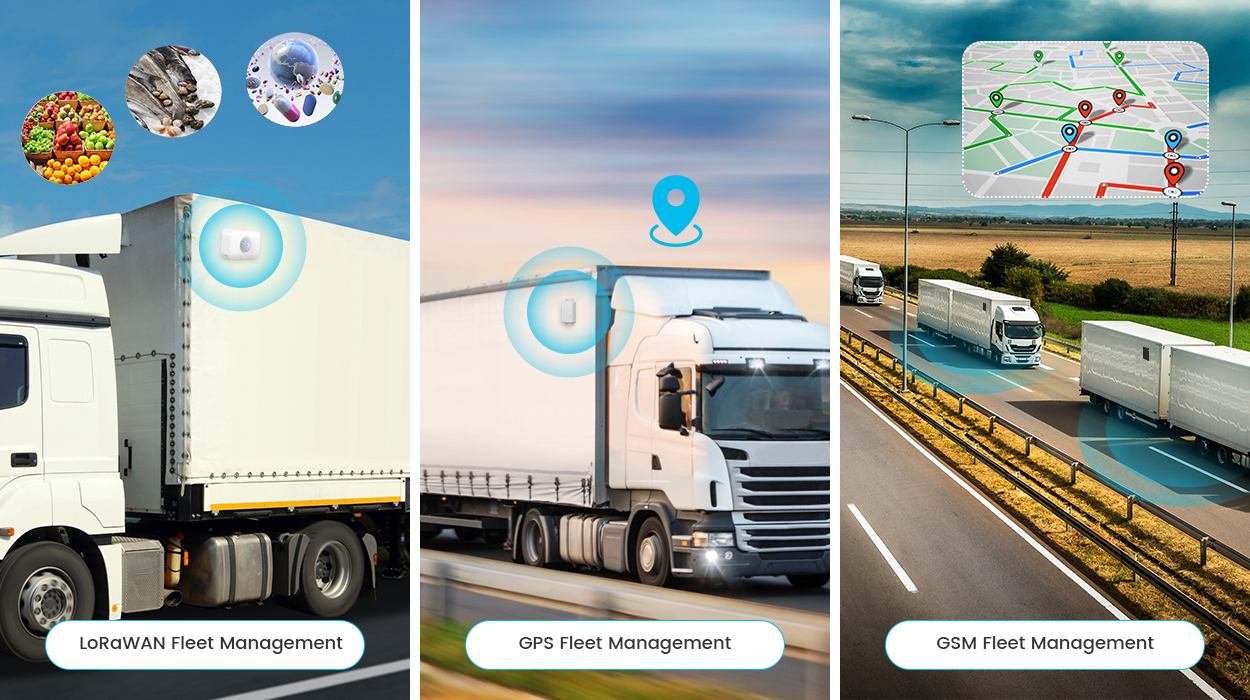
フリート管理テクノロジーはどこに適用されますか
フリート管理は、効率的な管理が必要なさまざまな業界や分野に適用されます。, 追跡, 車両と資産の最適化が不可欠です. フリート管理の一般的なアプリケーションと、それぞれに適したテクノロジーをいくつか紹介します。:
輸送とロジスティクス: リアルタイムの車両追跡のための GPS フリート管理, 資産の識別と在庫のための RFID と BLE, NB-IoTによるリモートデータとコストの最適化 – 配送で使用される, 配達, および物流会社.
工事と 重機: GPS/LoRaWAN追跡により、建設車両/重機の位置と使用状況を監視します. BLE は機器の識別とメンテナンスの追跡に役立ちます.
公共交通機関: GPS追跡とリアルタイムデータ通信 (Wi-Fi, NB-IoT) バス/電車のスケジュールを最適化する, ルート, 乗客のエクスペリエンスを向上させる. BLE はドライバーの識別と緊急対応に役立ちます.
緊急サービス: GPS/GSM により、リアルタイムの追跡とルーティングが可能になり、迅速な緊急対応が可能になります。 – 救急車, 消防車, パトカー. LoRaWAN/NB-IoT ソリューションは、リモート診断と患者モニタリングを支援します.
フィールドサービス: GPS/LoRaWAN は電力会社の効率的な配車とルート計画を支援します, 電気通信, および保守サービスプロバイダー. RFID/BLE は資産追跡に役立ちます, 在庫管理, およびアクセス制御.
廃棄物管理: GPS トラッカーは廃棄物収集車両を追跡し、ルートを最適化するのに役立ちます. LoRaWAN はコンテナの充填レベルをリモートで監視し、効率的な収集スケジュールを設定します.
学校送迎: GPS 追跡により、スクールバスの安全性と効率的な輸送が保証されます. 学生の安全監視システムと統合.
IoT フリート管理テクノロジーを選択する際の考慮事項
多数のIoTオプションが利用可能, フリート管理に適切なテクノロジーを選択することが重要です. このセクションでは重要な考慮事項について説明します:
- カバー範囲: フリートの運用に必要なカバー範囲を評価する. GPS, NB-IoT, LoRaWAN, および GSM は世界的または広範なカバレッジを提供します, 広大な地理的領域にまたがる運用に適しています. RFID, および BLE はカバー範囲がより限定されており、局地的または地域的な運用に適しています。.
- データ通信速度: 効果的なフリート管理のために必要なデータの送信速度を考慮する. GSM は比較的高いデータ伝送速度を提供します. LoRa と NB-IoT はデータ伝送速度が低いですが、リアルタイム データが重要ではないアプリケーションに適しています。.
- 消費電力: フリート管理テクノロジーの電力消費要件を評価する. LoRa と NB-IoT は低電力向けに設計されています, 電池式デバイス, 電力効率が重要なアプリケーションに最適. GPS, RFID, と GSM は通常、より多くの電力を消費します.
- 費用: フリート管理テクノロジーの導入と維持に伴うコストの影響を考慮する. GPS および GSM テクノロジーは、インフラストラクチャ要件とサービスのサブスクリプションによりコストが高くなる可能性があります. RFID, LoRa, NB-IoT テクノロジーは、多くの場合、よりコスト効率の高いオプションを提供します.
- スケーラビリティ: フリート管理テクノロジーが将来の成長や運用ニーズの変化に合わせて拡張できるかどうかを判断する. GPS, NB-IoT, と GSM はインフラストラクチャを確立しており、すぐに拡張可能です. LoRaWAN と BLE は、その特定の使用例とカバー範囲により、スケーラビリティに制限がある場合があります.
- アプリケーションの特異性: フリート管理アプリケーションの特定の要件を評価する. さまざまなテクノロジーには、アプリケーションに応じて長所と短所があります. 例えば, GPS はリアルタイム追跡と全地球測位に最適です, 一方、BLE と RFID は資産の識別と在庫管理に優れています。.
MOKOSmartの 特徴 IoT デバイス フリート管理用
MOKOSmart は BLE を提供します, NB-IoT, そして LoRaWANソリューション 包括的な IoT フリート管理向け. 当社の LoRaWAN ポートフォリオには以下が含まれます GPSトラッカー 屋内/屋外の追跡および貨物監視用の温度/湿度センサー用. NB-IoT GPS トラッカーは、カスタマイズ可能なアラームを備えた車両/資産のグローバルなリアルタイム位置追跡と監視を提供します。. さらに, ドライバー識別用のBLEタグを提供しています, ドアの状態を監視する複数のセンサー, そしてパニック警報.
当社の IoT デバイスは、車両のリアルタイム追跡と効率的な車両管理を支援します。. フリート管理テクノロジーの選択についてまだ疑問がある場合, MOKOSmartで, お客様にとって最適なソリューションを見つけるお手伝いをいたします. 今すぐお問い合わせください!
続きを読む フリート管理について
